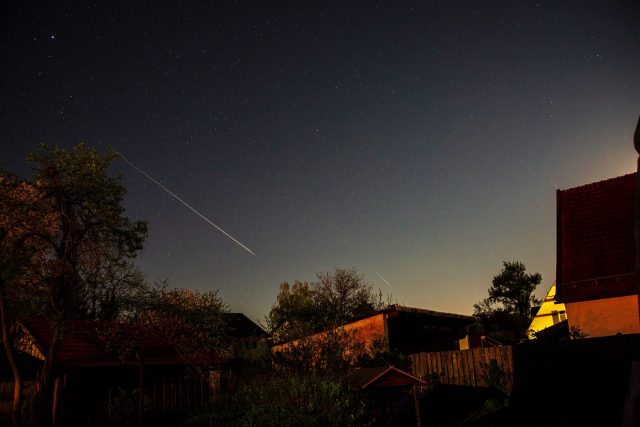ACTIVITY | The Lyrid Meteor Shower: An April Sky Spectacle
In the vast expanse of the night sky, a captivating celestial event awaits astronomy enthusiasts and stargazers alike. Brace yourselves for the Lyrid meteor shower, a dazzling display of shooting stars that occurs annually in mid to late April. In 2024, this awe-inspiring phenomenon will take place between the 14th and 30th of April, reaching its peak on the night of the 22nd and 23rd.
But what exactly is the Lyrid meteor shower? Picture this: as our planet traverses its orbit, it encounters a trail of debris left behind by celestial objects such as asteroids or comets. These fragments, known as meteors, hurtle through the atmosphere at an astonishing speed of approximately 50 kilometers per second. The friction generated by their rapid descent causes the meteors to heat up, reaching scorching temperatures of up to 1600°C. As a result, these celestial travelers emanate a brilliant glow, creating ethereal streaks of light across the night sky.
While most meteors disintegrate before reaching the Earth’s surface, a few manage to survive the journey and leave a lasting impression in the form of meteorites. These remnants serve as tangible evidence of the Lyrid meteor shower’s celestial dance.
Curiously, the Lyrid meteor shower is intimately linked to the long-period Comet C/1861 G1 Thatcher. This shower, which dates back to 687 BCE, holds the distinction of being the oldest recorded meteor shower still visible today. In a fascinating twist, despite seeming to originate from the constellation of Lyra, the meteors have no direct association with the distant group of stars. Rather, their apparent point of origin is determined by the motion of the Earth and the debris itself.
Imagine the Lyrid meteors as lanes of traffic on a straight motorway, all moving in parallel. When observed from our vantage point on Earth, their paths appear to diverge from the radiant point in Lyra, streaking across the sky in a mesmerizing display of cosmic motion. On rare occasions, a particularly bright meteor, referred to as a fireball, illuminates the darkness, outshining even the brightest planets like Venus.
So, when and where can one witness this celestial spectacle? To experience the Lyrid meteor shower in all its glory, one must seek out a dark location with an unobstructed view of the sky. The number of meteors visible to the naked eye will depend on various factors, including the time of night and the level of background light. For optimal viewing, the early morning hours of the peak day are recommended. As the radiant point in the constellation of Lyra ascends higher in the eastern sky after midnight, more meteors will become visible. However, it is essential to consider the gradual brightening of the sky as sunrise approaches, so plan accordingly and dress warmly to fully embrace the experience.
It is worth noting that the Lyrid meteor shower coincides with another celestial spectacle, the Eta Aquariids, which begins on April 19th and extends until May 28th. This overlapping shower provides stargazers with an extended period of celestial wonder, with its maximum activity occurring on May 6th, just two days before the new moon.
In conclusion, mark your calendars and prepare for a celestial extravaganza as the Lyrid meteor shower graces the night sky in April 2024. Embark on a journey of wonder and awe as you witness the ancient remnants of Comet Thatcher manifest as breathtaking shooting stars. Embrace the darkness, lie back, and let the wonders of the universe captivate your imagination.
Click below to see other activities :


